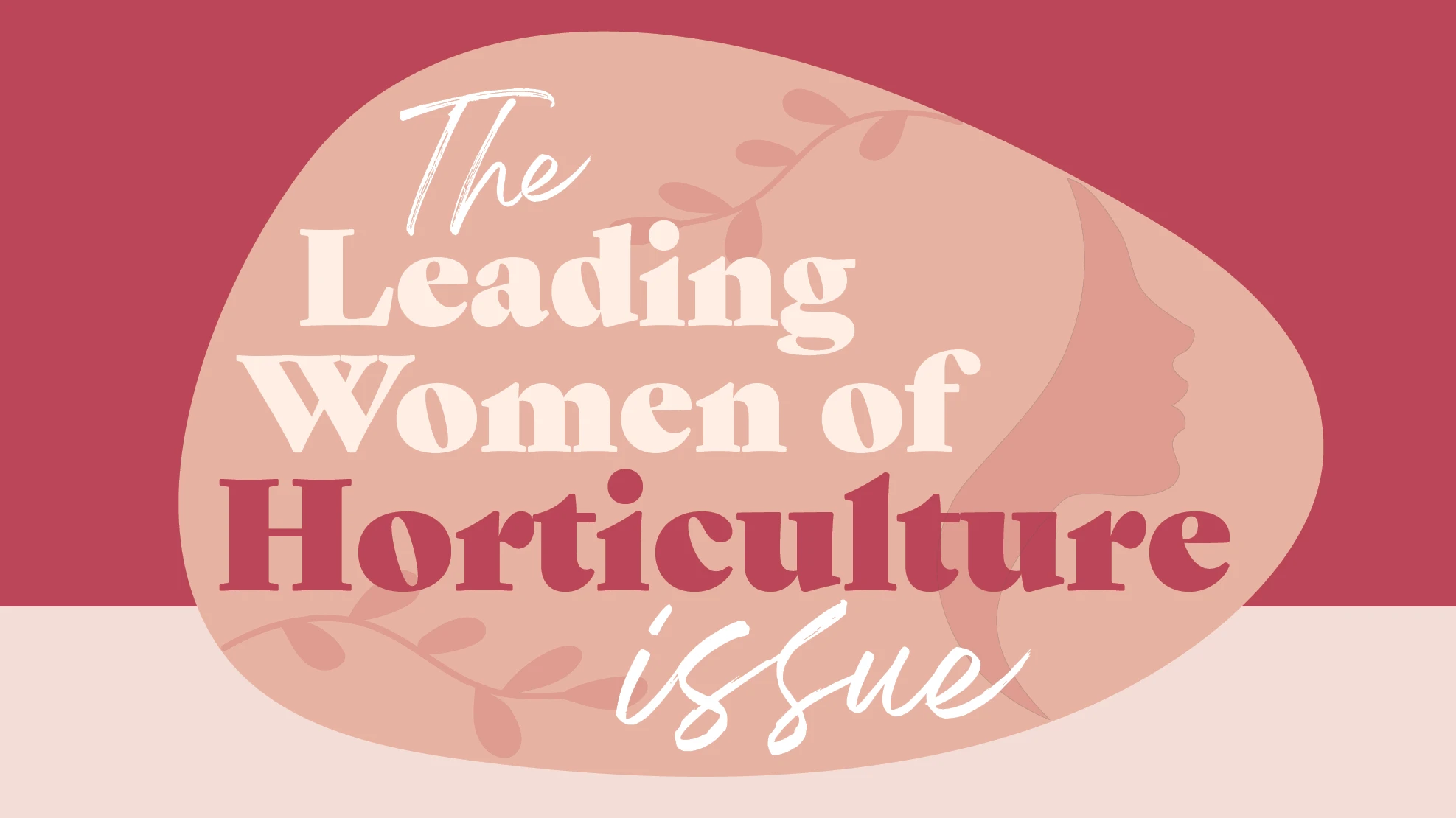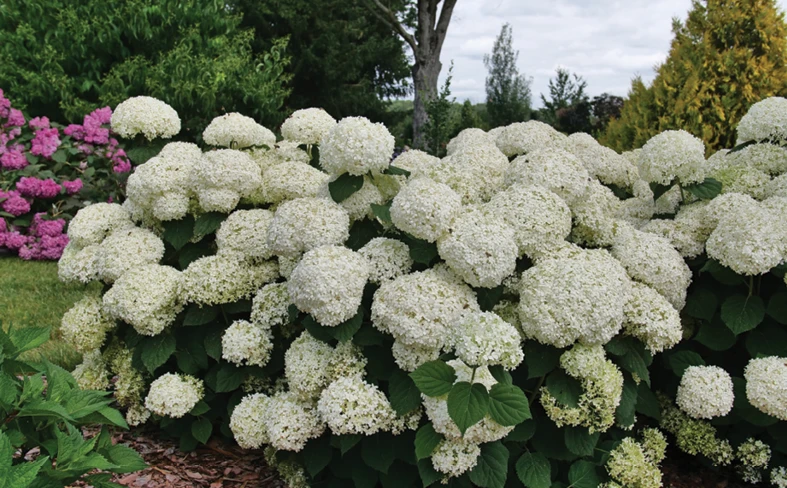|
After a long (seemingly endless) winter, most gardeners are eagerly looking forward to spring. Are you growing and selling early spring-flowering shrubs to satisfy the consumers’ cravings for spring color? Here are some good choices for USDA Hardiness Zones 4-8.
1. The corneliancherry dogwood (Cornus mas) is an adaptable, durable and relatively pest free large shrub or small tree. Plants commonly grow 20 to 25 feet tall and 15 to 20 feet wide. The corneliancherry dogwood produces small, yellow flowers in round, ¾-inch-wide clusters in early spring. When selecting a planting site, choose a location with a dark-colored background, such as a building or row of pine trees, to highlight the yellow flowers. After flowering, oblong ½- to 1-inch-long berry-like fruit develop. The fruit turn cherry red in late summer and are edible. The foliage of the corneliancherry dogwood is dark green in summer. Fall leaf color is inconsistent, occasionally an attractive purplish red. ‘Golden Glory’ is a heavy blooming, upright cultivar. The corneliancherry dogwood is hardy in USDA Hardiness Zones 4-8.
 Forsythia 'sunrise' 2. The bright yellow flowers of forsythia (Forsythia × intermedia) are a common sight in home landscapes in April. Several cultivars, such as ‘Lynwood Gold’ and ‘Spring Glory’ don’t bloom reliably in the upper Midwest because their flower buds aren’t sufficiently hardy. Excellent cold-hardy forsythia cultivars include ‘Meadowlark’ (8 to 10 feet tall), ‘Northern Sun’ (8 to 10 feet tall) and ‘Sunrise’ (5 feet tall). Forsythia foliage is dark green in summer. Fall color is usually poor. Fall foliage may vary from pale yellow to purple. Forsythias are most often planted in mixed shrub borders or utilized as informal hedges. Plants grow and bloom best in full sun. Forsythia 'sunrise' 2. The bright yellow flowers of forsythia (Forsythia × intermedia) are a common sight in home landscapes in April. Several cultivars, such as ‘Lynwood Gold’ and ‘Spring Glory’ don’t bloom reliably in the upper Midwest because their flower buds aren’t sufficiently hardy. Excellent cold-hardy forsythia cultivars include ‘Meadowlark’ (8 to 10 feet tall), ‘Northern Sun’ (8 to 10 feet tall) and ‘Sunrise’ (5 feet tall). Forsythia foliage is dark green in summer. Fall color is usually poor. Fall foliage may vary from pale yellow to purple. Forsythias are most often planted in mixed shrub borders or utilized as informal hedges. Plants grow and bloom best in full sun.
3. Vernal witchhazel (Hamamelis vernalis) is usually the first shrub to bloom in Iowa, where yellow to reddish-brown flowers appear in February and March. The strap-like petals curl up on cold days and unfurl on warm days. Foliage is reddish-purple in spring, medium-green in summer and yellow in fall. Vernal witchhazel grows 8 to 10 feet tall and has a slightly wider spread. Plants perform best in moist, well-drained soils in partial shade to full sun. Widely grown cultivars are ‘Autumn Embers’ (orange-yellow flowers, reddish purple fall foliage) and ‘Sandra’ (yellow flowers, yellow to orange-red fall foliage).
4. The star magnolia (Magnolia stellata) produces white, fragrant, 3- to 4-inch-diameter flowers in April. Unfortunately, the flowers are often damaged by a late frost or freeze and damaged flowers quickly turn brown. When selecting a planting site, avoid southern and western exposures that encourage early bloom. Eastern and northern exposures are often the best planting sites in the home landscape. The star magnolia is a slow-growing, large shrub or small tree that grows 10 to 12 feet tall. Its foliage is dark green in summer with little or no fall color. Plants are hardy in Zone 4. Noteworthy cultivars include ‘Centennial’ (white flowers with a slight pink tinge), ‘Royal Star’ (pink buds, white flowers) and ‘Waterlily’ (pink buds, white flowers, which flowers later than ‘Royal Star’).
 Nanking cherry. Nanking cherry.
Photo by Michael Kesl 5. The Nanking cherry (Prunus tomentosa) is a hardy shrub (Zone 3) that grows 8 to 10 feet tall. Plants produce pale pink to white flowers in April. After flowering, round fruit develop. The fruit turn red in early summer and are edible. (A single plant is unfruitful. Plant two or more shrubs for fruit set.) The foliage of Nanking cherry is dark green in summer. There is little or no fall color. Nanking cherry is often grown in windbreaks and wildlife plantings. It can also be utilized as a hedge or screen. Plants can be grown in full sun to partial shade.
6. The ‘PJM’ rhododendron (rhododendron hybrids) grows well over much of the upper Midwest. The small, evergreen foliage is dark green in summer, but turns to a maroon-purple in fall. The flower buds (hardy to -30°F) produce bright lavender pink blossoms in early to mid-April in southern Iowa, late April in northern portions of the state. The mature height and spread of the ‘PJM’ rhododendron is approximately 4 to 6 feet. Several selections of ‘PJM’ are available and include ‘PJM Compact’ (3 to 4 feet tall, lavender pink flowers), ‘PJM Elite’ (blossoms are slightly more pink) and ‘PJM Regal’ (medium pink flowers). ‘PJM’ rhododendrons perform best in protected sites that receive 3 to 4 hours of sun.
Other possibilities include white forsythia (Abeliophyllum distichum), flowering quince (Chaenomeles speciosa) and spicebush (Lindera benzoin).
Richard Jauron is extension specialist, Iowa State University, rjauron@iastate.edu.
|









